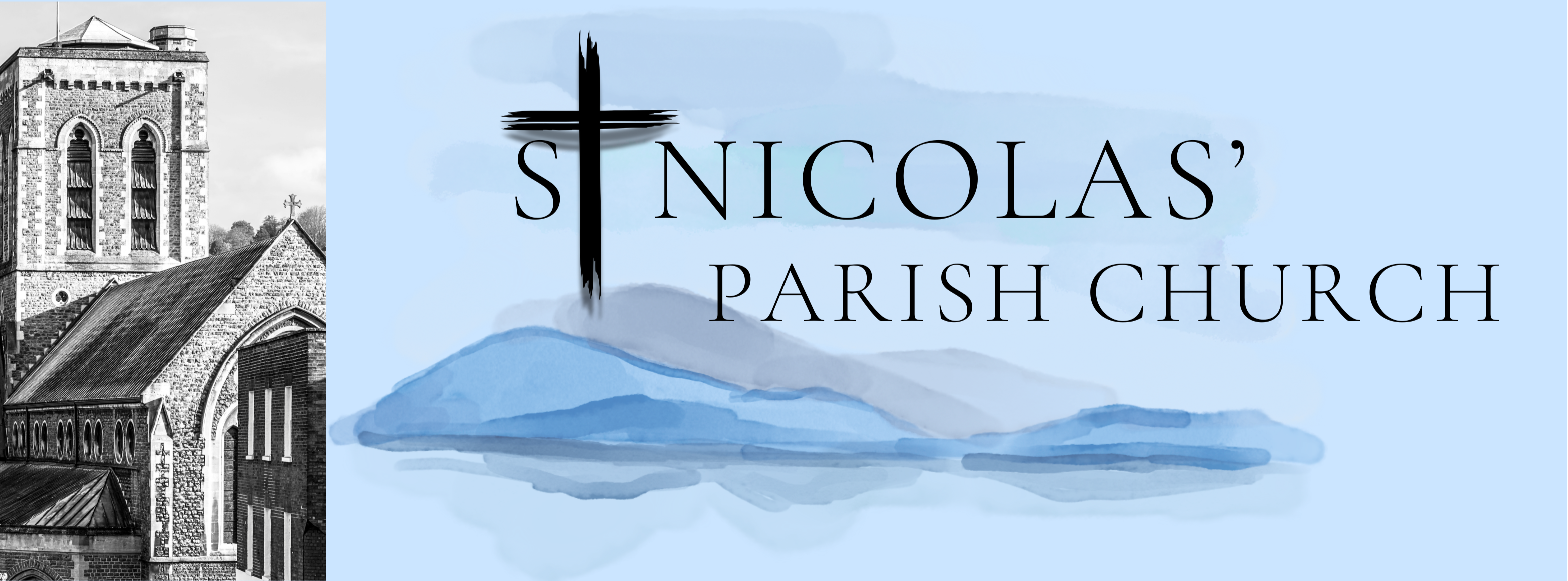Our Church, School, and Parish
The Parish church serves the local people for whom it is established. Our church building is open to visit and regularly used for concerts, meetings, by our school and other groups as well as our worship of Almighty God.
Our Church and School are two sides of the same coin: our worship centre and our learning centre are at the heart of what we do and who we are, giving our children and families an opportunity to see the wonder of God in all around, in one another and sharing that contagious joy with others in love of God and neighbour.
Children and families are especially welcome here – there is a Sunday morning Junior church each week in term time whilst the grown ups are in Mass and they return to worship with us and make their communion or receive a blessing at the altar.
Our building is a beautiful and welcoming space in which to encounter God in mystery and wonder as well as a space to find companionship and fellowship with our neighbours.
Our worship is in the 'Catholic' style: we use the beautiful space and our senses to encounter God through beautiful music from our professional Choir – the Foundation Singers – and through the traditions we believe teach us about the nature of God: we use ancient vestments which are timeless reminders of the tradition we have received, we use incense to remind us of our prayers rising to God, we sing ancient and modern music to express the state of the soul and most importantly we gather to be together to pray, rejoice and on occasion weep.
The Blessed Virgin Mary and the Saints are important to us. The Blessed Virgin Mary, sometimes called Our Lady is particularly important to us and we have a Cell or group connected to Our Lady's Shrine of Walsingham.
But most importantly of all, YOU are the most important part of the church – there may well be a building or a steeple, but look inside and see the people, as the old children's rhyme says!
Anglo-Catholic Worship
The Church of England and the wider Anglican Communion are confusing institutions! A part of what makes them confusing is the wide variety of types of church that call themselves Anglican. Just in Guildford, one can find churches which might be mistaken for American Conservative Evangelical churches; Australian Charismatic churches; or St Nic's, which might be thought to be Roman Catholic, with plenty of other churches falling somewhere in between these two. All of these expressions of church, in fact, can be found in the Church of England! In a time in history when there are so many divisions within the Global Church, how refreshing it is to say that such a wide range of expressions of Church are united with each other, all within the Anglican Communion of Churches!
The term "Anglo-Catholicism" itself describes a range of theological views and traditions within Anglicanism which emphasise the continuity of the Church of England - and those churches born out of it - with the teaching and practice of Christianity throughout the ages; it is to believe that God is the God of the living and (despite the best efforts of the Church at times!), the Spirit of God really has been active in shaping the Church's life of worship. "Anglo-Catholics" have always valued the sacramental life of the church and the symbolism it contains (the word "symbol" is from the Greek words meaning "throw-together," as our lives are thrown together with the pattern of life in Jesus) - Jesus has given us a pattern of life which we open ourselves to being moulded by through hearing his words in the Mass, daily learning to follow him through the waters of Baptism into new life, and so on. Anglo-Catholics adhere to doctrines such as the real presence of Christ in the Mass and the continuity of the apostolic orders of Bishop, Priest and Deacon. A significant stress on liturgy and worship - performed in order to maintain the beauty of holiness and to shape our heart's desires - makes worship in an Anglo-Catholic church an experience which is intended to appeal to one's whole person - to heart as well as head, to senses as well as to intellect.
For more information on Anglo-Catholic beliefs, see "Our Faith" in the drop-down menu.
St Nicolas's Church Building and its History
One of three ancient parish churches in the county town of Guildford, St Nicolas was built in the twelfth century and prayer has been valid ever since. The parish faces in two directions: sitting as it does at the foot of the town's High Street it is at first sight a town centre church as indeed it is, but the parish itself covers the Guildford hinterland – mainly rural and agricultural as well as the housing sitting in the comfortable southern part of the town.
The Parish includes Loseley Park, the home of More-Molyneux family since around 1509. Their memorial chapel which dates from c1550 is part of the parish church site and sits on the south of the church. You are welcome to visit this oldest monument in Guildford by prior arrangement with the Parish Administrator via email.
Also within the parish is St Catherine's Hill – a listed Grade 1 chapel dating c1300. This wonderful ruin is still in the pervue of the Rector and has royal connections to our castle.
For a video history of our wonderful building click here.
Dr Catherine Ferguson has researched and written the Statement of Significance for St Nicolas' which can be read here:
Statement of Significance for St Nicolas' Guildford
She has also produced the following video presentations which can be found on our YouTube channel:
